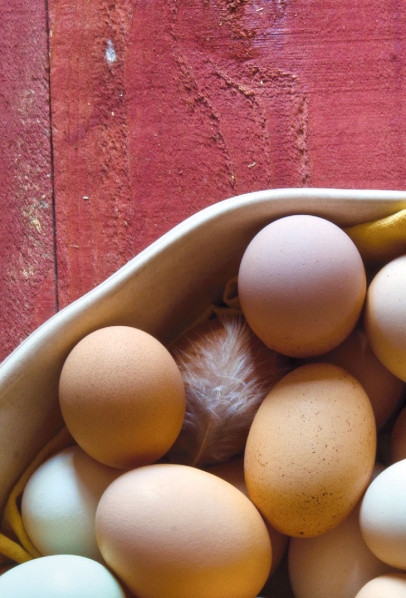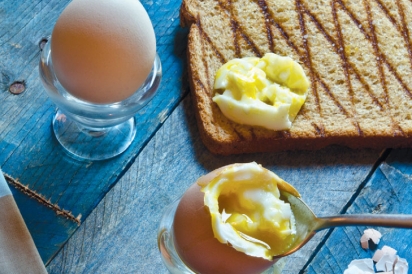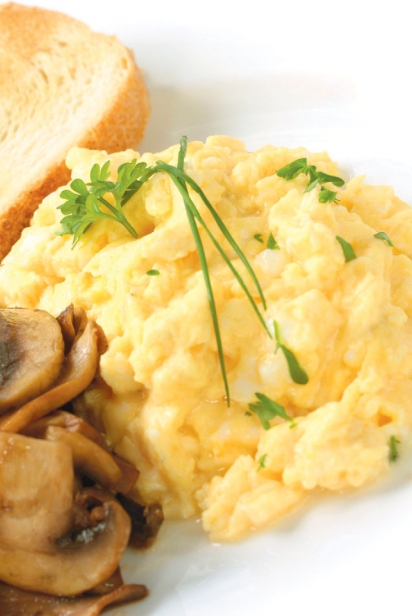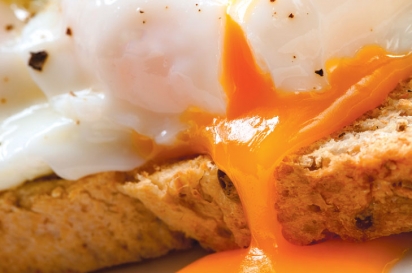An "EGGucation"
Some years ago, around graduation time, my column The Weekend Gourmet for the News and Observer talked about what I think is one of the most important kitchen education projects we can give our kids—how to cook eggs. If you can cook an egg you can survive that first stab at living on their own, and look pretty good to a date or family. Hand this off to a young person.
Hard boiled
Place eggs in the bottom of a heavy bottom pot and put cold water to cover the eggs by 1 inch. Cover part of the pot with a lid and bring to a boil. Reduce the heat slightly and cover the pot completely for 30 seconds. Remove the pot from the heat and let the eggs sit in the water with the pot covered for 15 minutes. Carefully remove the eggs and move to a colander and run under cold water until cool to the touch
Serving suggestions: The possibilities are endless! Let your imagination run wild!
Chef tip: Week old eggs work best for hard-boiled eggs instead of fresh eggs because the alkaline levels are higher. However we learned a new trick for fresh eggs from a farmer — steam fresh eggs for 20 minutes, place in cold water, and peel under cold water. Works like a charm.
Fried
There should be no fear of frying an egg. Take a non-stick pan and place it over medium heat. Throw in some butter. Crack your egg into a small bowl or ramekin. When the butter is foaming slide, the egg into the pan. For a sunny-side-up egg cover the pan with a dome style lid. If you have a lid slightly smaller than the pan use it. After 2-3 minutes, start checking the egg to your doneness liking. For an over easy or hard egg, leave the lid off and turn the egg as soon as the whites are fully set but not hard, usually about a minute and a half. Continue cooking until you hit your perfect doneness.
Chef’s tip: Fried eggs are perfect over salads, in sandwiches, especially a biscuit, on top of grits, or even stirred in with pasta.
Soft boiled
Bring a heavy bottom pot of water to a boil. Reduce the heat to a simmer and place the eggs in the water 1 at a time with tongs or a slotted spoon so they do not break. Make sure to keep the water at a simmer and cook for about 5 minutes for a runny yolk, 8 minutes for a soft set yolk. Carefully remove the eggs and place in a strainer and run under cold water to slow down the cooking process. Peel the eggs and eat the eggs while still warm.
Serving suggestions: Crack the top of the egg off and serve with toast points. Peel the egg completely and carefully dredge the egg in flour, egg wash and then fine ground breadcrumbs and deep-fry until just golden brown and serve.
Scrambled
For the very best eggs, think slow and low. Place a non-stick skillet over medium-low heat with a couple of pats of butter (or a little bacon fat). Break your eggs in a bowl and whisk until a uniform yellow color. Pour the eggs into the pan, and using a heat resistant spatula move the eggs from the outside to the middle, tilting the pan to allow the uncooked eggs to run to the outside. In about 3 minutes you should have nice creamy eggs. Want them a little dried? Cook a little longer, but keep them moving.
Chef’s tip: Stir in some goat cheese or Brie about halfway through for just plain decadent eggs.
Poached
In a wide deep skillet, put enough water in the skillet for the eggs to float and a couple drops of vinegar and bring to a boil. Break 1 egg into a small coffee mug and slide the egg into the water. Repeat with the remaining eggs but make sure not to over crowd the pan. Poach the eggs at a soft simmer until the whites are firm and the yolks are set but still runny which should take about 3 minutes. Using a slotted spoon or fine mesh spider, remove the eggs and set on a dinner plate sprayed with non-stick spray.
Serving suggestions: Frisee salad with bacon, eggs benedict, and artisanal pizza. Mac and cheese.
Chef tip: Poached eggs will keep overnight in cold water. Also break your eggs into a small fine meshed strainer and drain them one at a time to remove some of the water content from the egg for a more manageable egg white.








